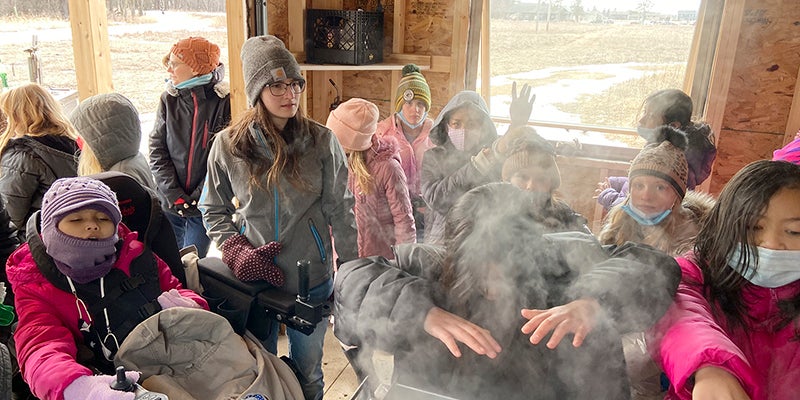Nature Notes: It’s maple syruping time again
Published 5:54 pm Friday, March 3, 2023
|
Getting your Trinity Audio player ready...
|
By Adrianna Meiergerd
Naturalist/Teacher Intern
It’s that time of year again where maple sap is flowing directly into the veins of the staff here at the Jay C. Hormel Nature Center.
March is that time when the nights still reach temperatures of below freezing and the days reach warmer temperatures of 40-50 degrees. These changes in temperature allow sap to flow steadily from the trees of silver maples at the Nature Center. The trees know when to start producing sap based on these temperature changes. Fluctuation in above and below freezing lets the tree know that it is spring and time to form new leaves. Sap is a necessary form of energy and nutrients for trees to make those new leaves.
But because sap is mostly water, if it stays above ground in the trunk of the tree, the sap will freeze and expand overnight when it is below freezing and cause damage to the tree. It could expand so much that the tree would bust open! That’s why sap moves up and down the tree during this time in the spring specifically.
During freezing temps, the sap will travel into the roots below the frost in the ground so as to not cause damage. This up and down movement is what allows us to “catch” the sap as it runs through the tree in early spring.
Our buckets hope to remain full this season with sap as it takes a lot of sap to make one gallon of syrup. Sap only contains 1 to 6% sugar while syrup has a 66% sugar content, so in order to produce one gallon of syrup, we need 30-40 gallons of sap. How do we separate out the sugar to change sap to syrup? Our sugar shack of course! We use firewood and an evaporator to prepare the sap into syrup. To find out if the sap has turned into syrup, we can measure the temperature.
The temperature of the sap needs to be at its boiling point, which is 7 degrees above the boiling point of water. The long period of being heated up allows the water to evaporate and the sugar to stay. Once golden in color, and the correct temperature and density is reached the syrup is ready to be strained and head straight into bottles ready for your kitchen table!
March at the Nature Center
March 11: Family Maple Syruping Class 1-3 p.m.
March 18: Friends Maple Syruping Class 1-3 p.m.
March 23: Winter Seed Sowing with Don Smith 6:30 p.m.


